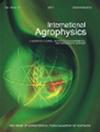考虑不同供水量可以提高WOFOST作物模型和遥感同化预测小麦产量的准确性
IF 2
4区 农林科学
Q2 AGRONOMY
引用次数: 0
摘要
进行这项研究是为了阐明不同的水和灌溉条件对作物模型和遥感同化结果的影响。以河南省17个试验点的冬小麦为研究对象,对世界粮食研究模型进行了标定。使用集合卡尔曼滤波算法对两种模式和校准后的世界粮食研究模型的中分辨率成像光谱仪叶面积指数进行了校准。研究发现,世界粮食研究模型模拟开花期和成熟期的平均误差在2天内,叶面积指数校准结果的R2在0.87-0.98之间,验证结果的R2和均方根误差分别为0.77和1.06。在潜在模型下,考虑供水情况的世界粮食研究模型的R2和不考虑供水情况下的同化结果分别为0.50和0.48。在限水模式下,与不考虑供水的同化结果相比,R2从0.79增加到0.86。结果表明:根据不同地区的供水情况,选择相应的同化参数,可以有效地提高作物模型和遥感同化对不同水分和灌溉条件下小麦产量的预测精度。本文章由计算机程序翻译,如有差异,请以英文原文为准。
Considering different water supplies can improve the accuracyof the WOFOST crop model and remote sensing assimilation in predicting wheat yield
. The study was carried out in order to clarify the effects of different water and irrigation conditions on crop models and remote sensing assimilation results. It involved taking winter wheat from 17 test sites in Henan Province as the research object and calibrating the World Food Studies model. The ensemble Kalman filter algorithm was used to calibrate the two modes and Moderate-resolution Imaging Spectroradiometer-Leaf Area Index of the calibrated world food studies model. The study found that the average error of the world food studies model for simulating flowering and maturity periods is within 2 days, the R 2 of the leaf area index calibration results is between 0.87-0.98, and the R 2 and root mean square error of the verification results are 0.77 and 1.06 respectively. Under the latent model, the R 2 of the world food studies model taking account of the water supply situation and the assimilation results without taking account of the water supply situation are 0.50 and 0.48, respectively. In the water restriction mode, the R 2 increased from 0.79 to 0.86 compared with the assimilation results where the water supply was not considered. The results show that: depending on the water supply of different regions, selecting the corresponding assimilation parameters can effectively improve the prediction accuracy of crop models and remote sensing assimilation for wheat yields under different water and irrigation conditions.
求助全文
通过发布文献求助,成功后即可免费获取论文全文。
去求助
来源期刊

International Agrophysics
农林科学-农艺学
CiteScore
3.60
自引率
9.10%
发文量
27
审稿时长
3 months
期刊介绍:
The journal is focused on the soil-plant-atmosphere system. The journal publishes original research and review papers on any subject regarding soil, plant and atmosphere and the interface in between. Manuscripts on postharvest processing and quality of crops are also welcomed.
Particularly the journal is focused on the following areas:
implications of agricultural land use, soil management and climate change on production of biomass and renewable energy, soil structure, cycling of carbon, water, heat and nutrients, biota, greenhouse gases and environment,
soil-plant-atmosphere continuum and ways of its regulation to increase efficiency of water, energy and chemicals in agriculture,
postharvest management and processing of agricultural and horticultural products in relation to food quality and safety,
mathematical modeling of physical processes affecting environment quality, plant production and postharvest processing,
advances in sensors and communication devices to measure and collect information about physical conditions in agricultural and natural environments.
Papers accepted in the International Agrophysics should reveal substantial novelty and include thoughtful physical, biological and chemical interpretation and accurate description of the methods used.
All manuscripts are initially checked on topic suitability and linguistic quality.
 求助内容:
求助内容: 应助结果提醒方式:
应助结果提醒方式:


